Kalanchoe Gastonis Bonnieri Care
Looking to master Kalanchoe Gastonis Bonnieri care? You’re in the right place. Known as the “Donkey Ear” plant, this unique succulent thrives with the right attention. Let’s dive into how you can keep your Kalanchoe Gastonis Bonnieri healthy and vibrant.
Light Requirements
First, choose a spot with plenty of indirect sunlight. This plant loves bright light but can get scorched if exposed to direct sun for too long.
Watering Tips
Watering is a breeze—just ensure the soil dries out between waterings to prevent root rot. A well-draining soil mix is essential for avoiding waterlogged roots.
Key Takeaways
- Indirect sunlight is best for growth.
- Allow the soil to dry out between waterings.
- Use a well-draining soil mix.
Keep it simple, and your Kalanchoe will flourish!
Choosing the Best Location for Kalanchoe Gastonis Bonnieri
Finding the perfect spot for your Kalanchoe Gastonis Bonnieri can be a game-changer in its growth journey.
Have you ever wondered why your plant isn’t thriving despite your best efforts?
The location you choose plays a crucial role in its overall health.
Key Considerations for Location
– **Light Exposure**: Kalanchoe Gastonis Bonnieri thrives in bright, indirect sunlight.
– A south-facing window is ideal, but be cautious of harsh direct rays that can scorch the leaves.
– **Temperature**: This plant prefers a warm environment.
– Aim for temperatures between 20°C and 25°C.
– Avoid placing it near drafts or air conditioning units.
– **Humidity Levels**: While Kalanchoe can tolerate lower humidity, it thrives in moderate levels.
– Consider placing a humidifier nearby or grouping it with other plants to boost humidity.
– **Accessibility**: Ensure the location allows for easy watering and maintenance.
– A spot on a kitchen windowsill or a well-lit shelf can be practical.
– **Safety from Pests**: Keep your plant away from areas where it might be exposed to pests.
– Avoid corners or cluttered spaces that can trap insects.
By carefully selecting the right location, you set the stage for your Kalanchoe Gastonis Bonnieri to flourish. For more detailed care tips, check out our guide on [optimal sunlight for thriving Kalanchoe plants](https://planthq.org/optimal-sunlight-for-thriving-kalanchoe-plants/). Additionally, understanding the [temperature tolerance of Kalanchoe](https://planthq.org/kalanchoe-temperature-tolerance-guide-optimal-conditions/) can further enhance your plant’s environment.
Light Requirements: Balancing Sunlight and Shade
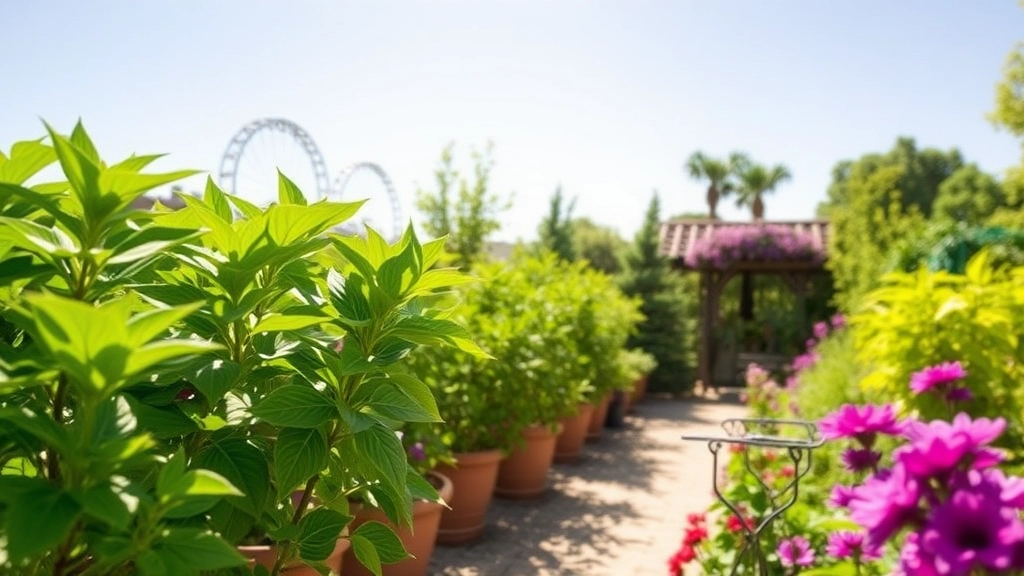
Are you scratching your head about where to place your Kalanchoe Gastonis Bonnieri?
Getting the light just right is crucial for keeping this stunning plant happy and thriving.
Understanding Light Needs
Kalanchoe Gastonis Bonnieri loves bright, indirect sunlight.
Too much direct sun can scorch its leaves, while too little can stunt its growth.
- Bright, Indirect Light: Aim for a spot where it can soak up bright light without being in the harsh sun. A south or east-facing window is often ideal.
- Filtered Sunlight: If direct sun is unavoidable, consider using sheer curtains to filter the light. This way, your plant gets the brightness it craves without the burn.
- Shade Tolerance: Kalanchoe can tolerate some shade, but be cautious. Too much shade can lead to leggy growth and fewer blooms.
Signs Your Plant Needs Adjustments
Keep an eye out for signs that your plant might be unhappy with its light situation:
- Yellowing Leaves: This could mean it’s getting too much direct sunlight.
- Leggy Growth: If your plant looks stretched out, it might be craving more light.
- Fading Colour: Dull leaves can indicate insufficient light.
Tips for Seasonal Changes
As seasons change, so does the light.
In winter, you may need to move your Kalanchoe closer to the window to ensure it gets enough brightness.
Conversely, in summer, consider relocating it slightly away from direct sun to prevent scorching.
Watering Tips: Preventing Overwatering and Root Rot
As we delve deeper into the care of Kalanchoe Gastonis Bonnieri, one of the most pressing concerns for many plant enthusiasts is how to effectively manage watering.
Why is Overwatering a Concern?
Overwatering is a common issue that can lead to root rot, a condition that can quickly devastate your plant.
Ideal Soil Mix for Healthy Growth
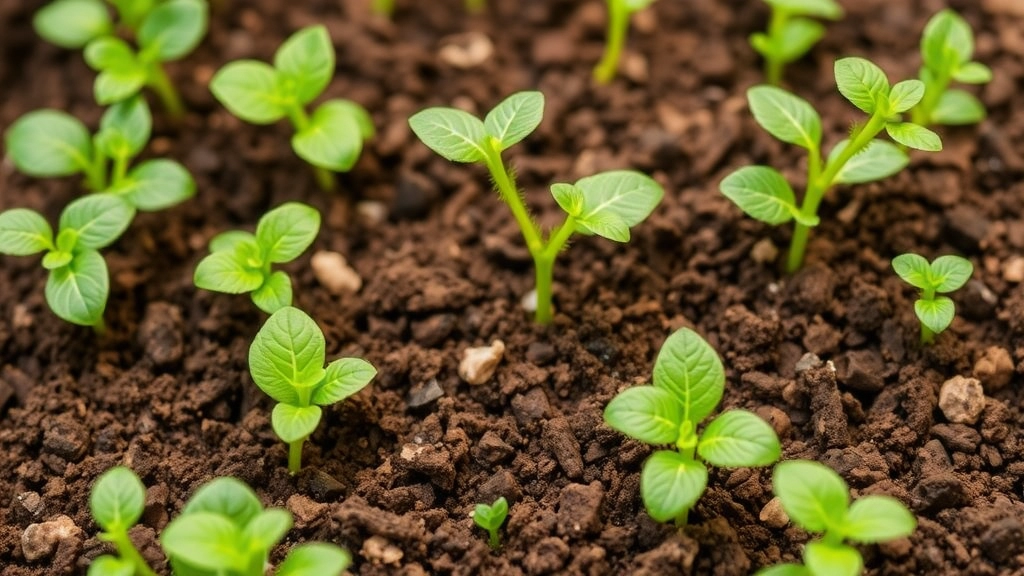
Choosing the right soil mix is crucial for the thriving health of your Kalanchoe Gastonis Bonnieri.
Have you ever wondered why your plant isn’t flourishing despite your best efforts? The answer often lies in the soil.
Key Components of an Ideal Soil Mix
For Kalanchoe Gastonis Bonnieri, a well-draining soil mix is essential. Here’s how to create the perfect blend:
- Cactus Mix: Start with a high-quality cactus or succulent potting mix. This ensures excellent drainage.
- Perlite or Pumice: Add around 25-30% perlite or pumice to your mix. This increases aeration and drainage, preventing water from pooling around the roots.
- Organic Matter: Incorporate some organic matter, like compost, to provide essential nutrients. A small amount goes a long way.
- pH Level: Aim for a slightly acidic to neutral pH level (around 6.0 to 7.0). This supports nutrient absorption.
Mixing It Up
When preparing your soil mix, follow these simple steps:
- Combine: In a large container, mix equal parts of cactus mix and organic matter.
- Add Perlite: Stir in the perlite or pumice until evenly distributed.
- Check Consistency: The final mix should be light and crumbly, allowing easy root penetration.
Why Soil Matters
Using the right soil mix not only promotes healthy growth but also helps prevent common issues like root rot.
Managing Temperature and Humidity Needs
As we consider the overall care for Kalanchoe Gastonis Bonnieri, it’s crucial to understand how temperature and humidity can significantly impact its growth.
Ideal Temperature Range
Kalanchoe Gastonis Bonnieri thrives in a warm environment. Here are some key points to remember:
- Optimal Temperature: Aim for a range between 20°C to 25°C (68°F to 77°F).
- Nighttime Temperature: A slight drop to around 15°C (59°F) is acceptable at night.
- Avoid Cold Drafts: These plants are sensitive to sudden temperature changes, so keep them away from windows or doors that may let in cold air.
Humidity Levels
Humidity can also play a role in the health of your Kalanchoe:
Fertilization: Best Practices for Nutrient Support
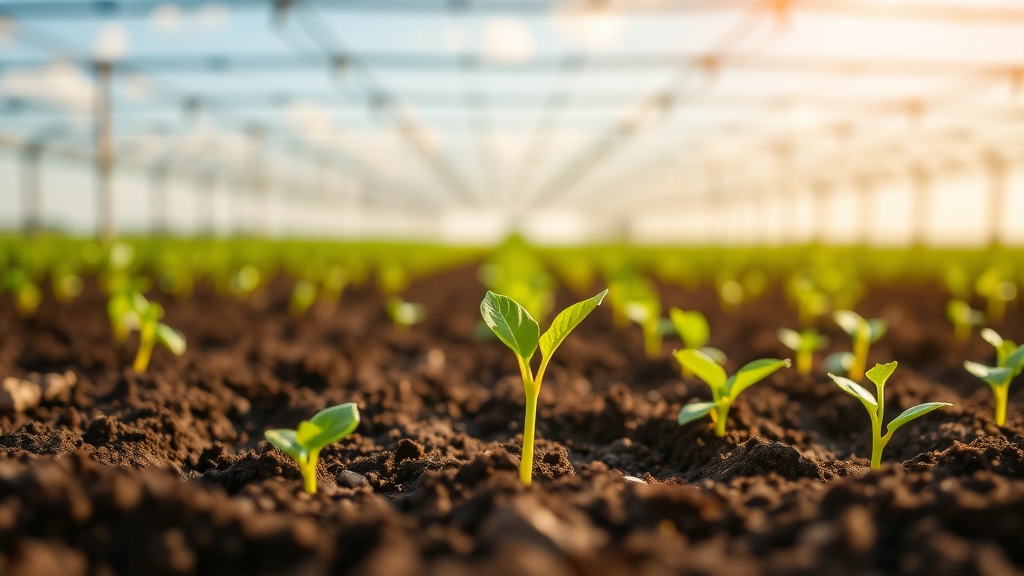
So, you’ve got your Kalanchoe Gastonis Bonnieri thriving, but how do you keep it that way? One of the key elements to its success is proper fertilization.
Why Fertilize?
You might be wondering, “Do I really need to fertilize my plant?” Well, yes! Fertilization helps provide essential nutrients that might be lacking in your soil. Think of it as a little boost for your plant, ensuring it remains vibrant and healthy.
When to Fertilize
- Growing Season: Fertilize during the spring and summer when your plant is actively growing.
- Frequency: Every 4-6 weeks is a good rule of thumb.
What Type of Fertilizer?
- Balanced Fertilizer: A balanced, water-soluble fertilizer (like a 10-10-10) works wonders.
- Dilution: Always dilute to half strength to avoid overwhelming your plant.
Application Tips
- Water First: Water your plant lightly before applying fertilizer. This helps prevent root burn.
- Even Distribution: Apply evenly around the base, avoiding the leaves.
Signs Your Plant Needs More Nutrients
- Yellowing leaves?
- Stunted growth?
- Lack of blooms?
These could be signs that your Kalanchoe is craving a nutrient boost.
VII. Pruning and Grooming to Encourage Growth
As we delve into the care of Kalanchoe Gastonis Bonnieri, it’s crucial to understand the importance of pruning and grooming for optimal growth.
Many plant enthusiasts often worry about how to maintain the shape and health of their Kalanchoe. Pruning not only encourages new growth but also helps prevent overcrowding and disease.
How to Propagate Kalanchoe Gastonis Bonnieri
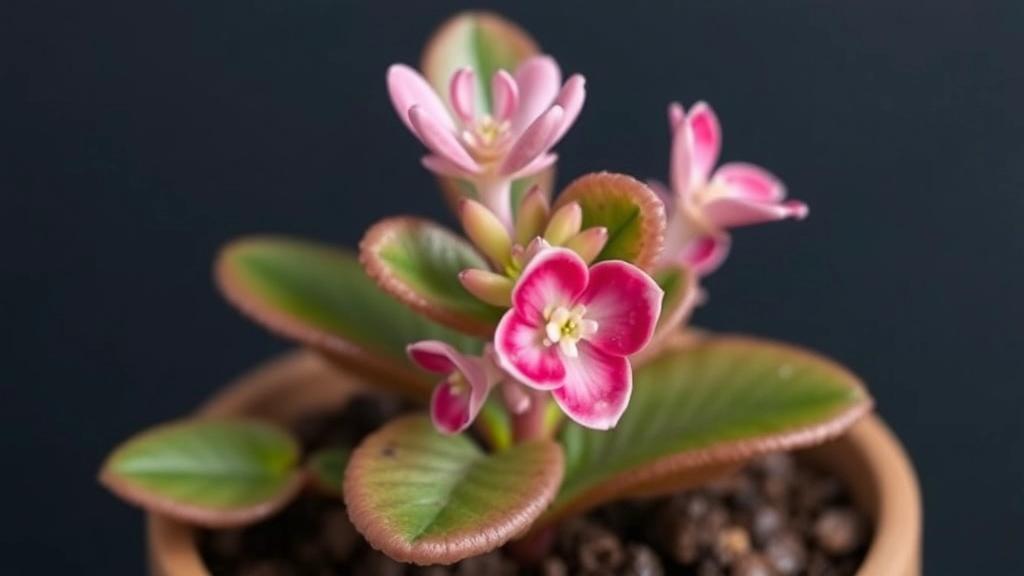
So, you’re loving your Kalanchoe Gastonis Bonnieri and thinking, “How can I get more of these beauties?”
Propagation is a fantastic way to expand your plant family without breaking the bank. Plus, it’s super satisfying to watch new plants grow from cuttings or leaves.
Methods of Propagation
- Leaf Cuttings
- Choose a healthy leaf from your plant.
- Use a clean, sharp knife to cut it off.
- Let the cut end dry for a day or two to form a callus. This helps prevent rot.
- Place the leaf on well-draining soil, keeping it slightly moist but not soggy.
- Stem Cuttings
- Snip a stem that’s at least a few inches long.
- Remove the lower leaves, leaving a couple at the top.
- Again, let it dry for a day to form a callus.
- Plant it in soil, burying the cut end about an inch deep.
- Offsets
- Sometimes, your Kalanchoe will produce little offsets or “pups.”
- Gently separate these from the main plant.
- Plant them in their own pots with the right soil mix.
Tips for Successful Propagation
- Light: Keep your cuttings in bright, indirect light.
- Humidity: A little humidity helps, especially for leaf cuttings. You can cover them with a plastic bag to maintain moisture.
- Patience: It can take a few weeks for roots to develop, so don’t rush it!
Common Mistakes to Avoid
- Overwatering: This is the biggest killer. Make sure the soil dries out between waterings.
- Too Much Sun: Direct sunlight can scorch your cuttings. Stick to bright, indirect light.
As we delve into the care of Kalanchoe Gastonis Bonnieri, it’s essential to address a significant concern: pests and diseases. These can undermine the health of your plant and lead to frustrating setbacks.
### Common Pests
– **Mealybugs**
– Small, white cotton-like clusters found on leaves and stems.
– Often cause yellowing and wilting.
– **Spider Mites**
– Tiny red or brown dots, often found on the undersides of leaves.
– Can create fine webbing, leading to leaf drop.
– **Aphids**
– Small, green or black insects that cluster on new growth.
– Can cause stunted growth and distorted leaves.
#### Treatment Options
– **Insecticidal Soap**: Effective against mealybugs and aphids. Spray directly on the pests.
– **Neem Oil**: A natural remedy that disrupts pest life cycles. Apply weekly until the problem subsides.
– **Water Spray**: A strong jet of water can dislodge spider mites and aphids.
### Common Diseases
– **Root Rot**
– Caused by overwatering and poor drainage.
– Symptoms include wilting, yellowing leaves, and a foul smell from the soil.
– **Powdery Mildew**
– A white, powdery substance on leaves.
– Often a result of high humidity and poor air circulation.
#### Treatment Options
– **For Root Rot**
– Repot the plant in fresh, well-draining soil.
– Ensure the pot has adequate drainage holes.
– **For Powdery Mildew**
– Increase air circulation around the plant.
– Use a fungicidal spray or a mixture of water and baking soda to treat affected areas.
### Prevention Tips
– **Inspect Regularly**: Check your plant weekly for signs of pests or diseases.
– **Maintain Proper Watering**: Allow the soil to dry out between waterings.
– **Provide Good Airflow**: Position your plant where it can benefit from natural ventilation.
For more detailed care, you might find our [complete care guide for Kalanchoe Chocolate Soldier](https://planthq.org/complete-care-guide-for-kalanchoe-chocolate-soldier/) useful. Additionally, if you’re dealing with black spots on your Kalanchoe, our guide on [how to treat black spots on Kalanchoe plants](https://planthq.org/how-to-treat-black-spots-on-kalanchoe-plants-2/) can offer some helpful solutions.
Repotting Techniques for Mature Kalanchoe Gastonis Bonnieri
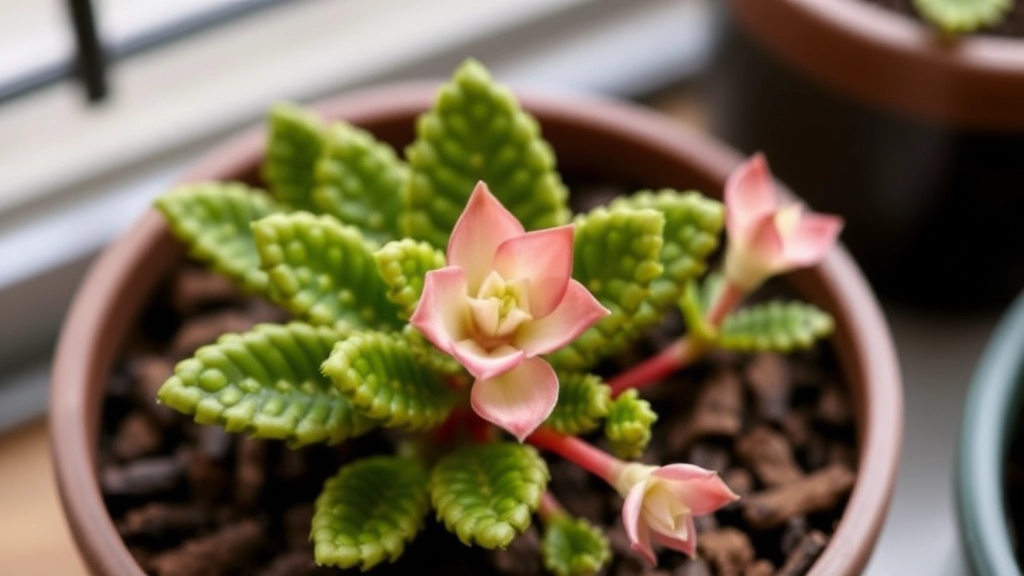
So, you’ve got a mature Kalanchoe Gastonis Bonnieri that’s bursting out of its pot?
That’s a good sign!
It means your plant is thriving, but it also means it’s time to repot.
Repotting can seem daunting, but it’s actually a straightforward process.
When to Repot
- Signs of Root Bound: If you see roots poking out of the drainage holes or if the plant isn’t growing as it should, it’s time.
- Soil Degradation: If the soil looks compacted or is breaking down, that’s another cue.
Choosing the Right Pot
- Size Matters: Go for a pot that’s 1-2 inches larger in diameter than the current one. Too big, and you risk overwatering.
- Drainage is Key: Ensure the new pot has adequate drainage holes to prevent root rot.
The Repotting Process
- Prepare Your Space: Lay down some newspaper or a tarp to catch any mess.
- Remove the Plant: Gently squeeze the pot to loosen the soil, then tip it sideways to slide out the plant.
- Inspect the Roots: Trim any brown or mushy roots with clean scissors. Healthy roots should be white or light tan.
- Add Fresh Soil: Place a layer of fresh soil at the bottom of the new pot.
- Position the Plant: Set your Kalanchoe in the centre and fill in around the sides with more soil, leaving about an inch of space at the top.
- Water Thoroughly: Give it a good drink to help settle the soil around the roots.
Aftercare
- Keep It Shady: For a week or so, keep your plant out of direct sunlight to help it adjust.
- Monitor Watering: Don’t overwater right after repotting. Wait until the top inch of soil is dry.
Repotting can feel like a big task, but it’s also a chance to give your Kalanchoe a fresh start.
As we transition between seasons, the care requirements for Kalanchoe Gastonis Bonnieri shift significantly. This can be a source of confusion for many plant enthusiasts.
### Summer Care Tips:
– **Light Exposure:** During summer, ensure your Kalanchoe receives ample bright, indirect light. Too much direct sunlight can scorch its leaves.
– **Watering Frequency:** With higher temperatures, your plant may require more frequent watering. However, always check the soil moisture first. Water only when the top inch of soil feels dry.
– **Humidity Levels:** Kalanchoe thrives in moderate humidity. If your home is particularly dry, consider misting the plant or placing a humidity tray nearby.
– **Fertilisation:** Use a balanced, water-soluble fertiliser every four to six weeks to support its growth during the active growing season.
### Winter Care Tips:
– **Light Requirements:** In winter, sunlight is less intense. Position your plant near a south-facing window to maximise light exposure.
– **Watering Adjustments:** Reduce watering frequency. The plant enters a dormant phase, so allow the soil to dry out more between waterings.
– **Temperature Considerations:** Kalanchoe prefers warmer temperatures. Keep it in a room that stays above 10°C (50°F) to avoid cold stress.
– **Avoid Fertilisation:** Hold off on fertilising during the winter months, as the plant does not actively grow during this time.
For more specific guidance on seasonal care, you might find our [outdoor Kalanchoe care expert tips](https://planthq.org/outdoor-kalanchoe-care-expert-tips-and-best-practices/) helpful. Additionally, understanding why [Kalanchoe leaves fall off](https://planthq.org/why-are-my-kalanchoe-leaves-falling-off-solutions-inside/) can provide further insights into maintaining a healthy plant year-round.
FAQs About Kalanchoe Gastonis Bonnieri Care
What type of light does Kalanchoe Gastonis Bonnieri need?
Kalanchoe Gastonis Bonnieri thrives in bright, indirect sunlight. Too much direct sun can scorch its leaves, while too little light can stunt its growth. A south or east-facing window is usually ideal.
How do I know if my Kalanchoe Gastonis Bonnieri is getting the right amount of light?
Signs that your plant may need light adjustment include yellowing leaves (too much direct sunlight), leggy growth (craving more light), and fading color (insufficient light).
What is the best soil mix for Kalanchoe Gastonis Bonnieri?
A well-draining soil mix is essential. Use a high-quality cactus or succulent potting mix, add 25-30% perlite or pumice for aeration, and incorporate some organic matter like compost. Aim for a slightly acidic to neutral pH level (around 6.0 to 7.0).
How often should I fertilize my Kalanchoe Gastonis Bonnieri?
Fertilize during the spring and summer growing seasons every 4-6 weeks. Use a balanced, water-soluble fertilizer diluted to half strength to avoid overwhelming the plant.
What are the signs that my plant needs more nutrients?
Yellowing leaves, stunted growth, and a lack of blooms can indicate that your Kalanchoe Gastonis Bonnieri needs more nutrients.
How can I propagate Kalanchoe Gastonis Bonnieri?
You can propagate Kalanchoe Gastonis Bonnieri through leaf cuttings, stem cuttings, or offsets. Each method involves allowing the cut ends to dry and form a callus before planting them in well-draining soil.
What are common mistakes to avoid when propagating Kalanchoe Gastonis Bonnieri?
Common mistakes include overwatering, which can lead to rot, and exposing the cuttings to too much direct sunlight, which can scorch them. Stick to bright, indirect light and let the soil dry out between waterings.
When should I repot my mature Kalanchoe Gastonis Bonnieri?
Repot your plant when you see signs of being root-bound, such as roots poking out of drainage holes or stunted growth, or if the soil looks compacted or degraded.
What size pot should I use when repotting?
Choose a pot that is 1-2 inches larger in diameter than the current one. Ensure the new pot has adequate drainage holes to prevent root rot.
What are the steps for repotting Kalanchoe Gastonis Bonnieri?
The repotting process involves preparing your space, gently removing the plant, inspecting and trimming the roots, adding fresh soil to the new pot, positioning the plant, and watering thoroughly. After repotting, keep the plant out of direct sunlight for about a week and monitor watering.
References
-
Growing Kalanchoe: Tips and Tricks
-
Kalanchoe Gastonis Bonnieri Care Guide
-
Houseplant 411: Kalanchoe Gastonis Bonnieri Care Instructions
